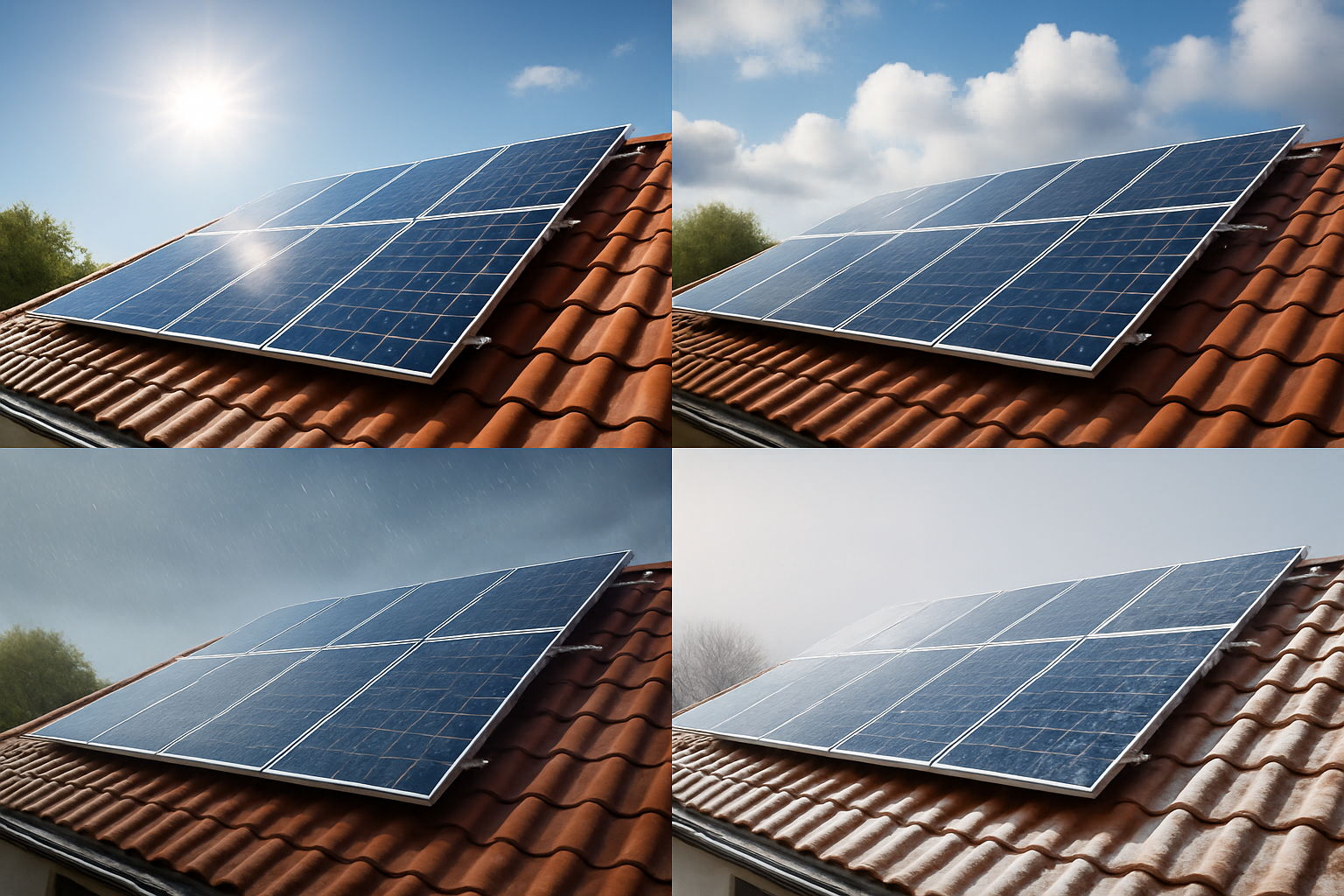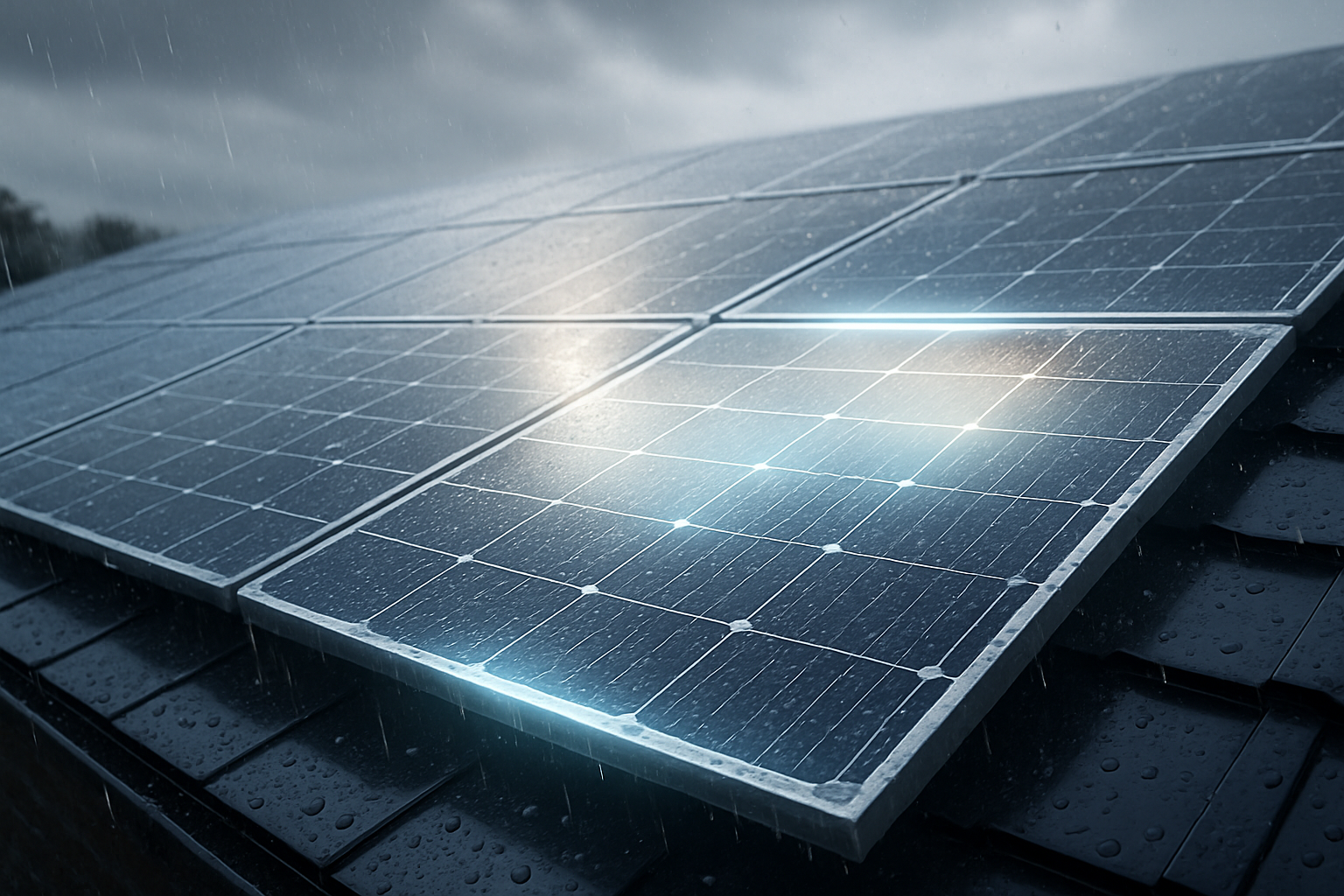Solar energy has transformed the way we power our lives. Yet, common questions persist regarding its effectiveness in less-than-ideal weather conditions. Many wonder if solar panels truly deliver power on cloudy days, or if extreme cold and intense heat diminish their output. This article clarifies these misconceptions, providing a comprehensive view of how solar technology performs across various climates and seasons.

Solar Performance in Cloudy Conditions
A frequent concern about solar power relates to its performance during cloudy periods. It is a common belief that solar panels cease to function without direct, bright sunlight. However, this is a misconception. Solar panels continue to generate electricity even when the sun is obscured by clouds.
Understanding Diffused Light
When clouds cover the sun, solar power generation does fluctuate. The amount of energy panels capture depends significantly on the type of clouds and their position. High, thin clouds, for instance, block very little direct sunlight. While cloud cover does decrease the amount of sunlight panels receive, they are not entirely cut off from energy intake. You might still achieve 10 to 25 percent of the power you would derive from a clear sky. This diffused light contributes to overall energy production, making solar a viable option even in regions with frequent overcast weather.
Interestingly, overcast conditions can sometimes help disperse light. This allows solar panels aimed in different directions to absorb slightly more light than they would under direct sun. This phenomenon highlights the adaptability of solar technology. Despite the variability, leading organizations confirm that weather-driven fluctuations are manageable for grid integration. According to the IEA, the claim that "wind and solar PV show extreme, short-term fluctuations that make them unsuitable as a generation resource" is a fallacy that disappears as experience with deployment grows. Further IEA reports reinforce this perspective, emphasizing that such variability is not unmanageable.
Enhancing Reliability with Forecasting and Storage
To mitigate the impact of solar power fluctuations, advanced forecasting techniques are crucial. Probabilistic forecasting, for example, offers a more detailed prediction than simple deterministic forecasts. Instead of merely predicting "no clouds," it might suggest "a 30 percent chance of cloud cover at 3 p.m." This additional detail on uncertainty allows grid operators to manage operational costs and risks more effectively. Research supported by the U.S. Department of Energy (DOE) and conducted by Maxar and NREL has demonstrated that novel approaches to solar forecasting can improve grid reliability and deliver economic savings.
For individuals and businesses, integrating a robust energy storage system is key. High-performance lithium iron phosphate (LiFePO4) batteries offer a reliable solution, storing excess energy generated during sunny periods for use when sunlight is less abundant. This ensures a consistent power supply, helping you achieve greater energy independence.
Solar Performance in Cold Weather
Intuitively, one might assume that cold weather negatively impacts solar panel efficiency. However, this is another common misconception. Solar panels often perform more efficiently in cooler temperatures.
The Temperature Coefficient Advantage
Unlike many electronic devices, solar panels actually become more efficient as temperatures drop. This is due to a characteristic known as the "temperature coefficient." Most crystalline silicon solar panels have a negative temperature coefficient, meaning their output voltage increases as the temperature decreases. While the voltage increases, the power output typically decreases slightly with rising temperatures, and increases slightly with falling temperatures. For example, a typical solar panel might have a temperature coefficient of -0.3% to -0.5% per degree Celsius. This implies that for every degree Celsius below 25°C (77°F), the panel's efficiency slightly improves.
This means that a crisp, clear winter day with plenty of sunlight can be ideal for solar power generation, often yielding higher efficiencies than a scorching summer day.
Addressing Snow Cover
While cold temperatures themselves are beneficial, snow cover can certainly impede solar production. A blanket of snow on your panels blocks sunlight, effectively halting energy generation. However, solar panels are typically installed at an angle, which helps snow slide off naturally. The dark surface of the panels also absorbs some sunlight, generating a small amount of heat that can accelerate snow melt. For persistent snow, gentle removal methods or professional cleaning may be necessary. For off-grid solutions, a well-sized lithium battery bank remains crucial to store energy for periods when panels might be covered.
Solar Performance in Hot Weather
While cold weather can enhance solar panel efficiency, extreme heat tends to have the opposite effect. High temperatures can reduce a solar panel's power output.
Understanding Heat Degradation
As mentioned, solar panels have a negative temperature coefficient. This means that as the panel's temperature rises above its standard test condition (STC) temperature of 25°C (77°F), its efficiency begins to decline. For every degree Celsius above this threshold, the panel's power output can decrease by 0.3% to 0.5%. On a hot summer day, a panel exposed to direct sunlight can reach temperatures far exceeding the ambient air temperature, potentially reaching 65°C (150°F) or higher. This can lead to a noticeable reduction in energy production compared to its peak performance under cooler conditions.
For example, if a panel has a -0.4% temperature coefficient and operates at 45°C (20°C above STC), its output could be reduced by 8% (20 * 0.4%).
Mitigating Heat Effects
To counteract heat degradation, proper installation and ventilation are vital. Ensuring adequate airflow beneath and around the solar panels helps dissipate heat, keeping them cooler and closer to their optimal operating temperature. Mounting systems that allow for sufficient spacing between the panels and the roof are beneficial. Some advanced panel technologies are also designed to perform better in high temperatures, exhibiting lower temperature coefficients. Choosing high-performance solar inverters that efficiently convert direct current (DC) from panels to alternating current (AC) for your home also plays a role in overall system efficiency, regardless of temperature.
Building a Resilient Solar Energy System
Understanding how solar panels perform across different weather conditions reinforces the importance of a well-designed and integrated solar energy system. Our company, with years of experience in the solar and energy storage industry, focuses on delivering reliable and scalable energy solutions that empower you to achieve energy independence.
Our commitment to excellence is reflected in our core offerings:
- Lithium Iron Phosphate (LiFePO4) Batteries: We manufacture high-performance, safe, and reliable LiFePO4 batteries. These are the backbone of any resilient solar system, providing stable energy storage that can withstand daily charge and discharge cycles, even under varying solar input.
- Home Energy Storage Systems (ESS): Our integrated home energy storage systems combine cutting-edge lithium batteries, hybrid inverters, and high-efficiency solar panels. This holistic approach ensures seamless energy management, allowing you to maximize self-consumption and minimize reliance on the grid.
- Off-Grid Solar Solutions: For homes, farms, cabins, and other remote locations, our off-grid solar solutions provide complete energy autonomy. These systems are designed to operate independently, offering consistent power even in challenging environments, supported by robust energy storage.
- Solar Inverters: Our solar inverters are engineered to efficiently convert the direct current generated by your solar panels into usable alternating current for your appliances. They are a critical component, ensuring optimal energy conversion and system performance.
The global shift towards renewable energy is accelerating. In 2022, 83% of new power generation capacity came from renewable sources. According to IRENA, this robust expansion represents significant progress toward limiting global temperature increases. While solar generation constituted 3% of U.S. electricity generation in 2020, this highlights substantial opportunities for future deployment as systems become more sophisticated and integrated.
Empowering Your Energy Future
Solar energy systems are remarkably adaptable and resilient, capable of performing effectively across a spectrum of weather conditions. From generating power under cloudy skies to thriving in cold temperatures and managing efficiency in the heat, modern solar technology, combined with advanced energy storage solutions like LiFePO4 batteries and intelligent inverters, offers a robust path to energy independence.
By understanding the realities of solar performance, you can make informed decisions about your energy needs. Investing in a comprehensive solar and storage solution provides not only environmental benefits but also long-term energy security and financial savings. Your journey towards a sustainable and independent energy future is well within reach.





Leave a comment
All comments are moderated before being published.
This site is protected by hCaptcha and the hCaptcha Privacy Policy and Terms of Service apply.